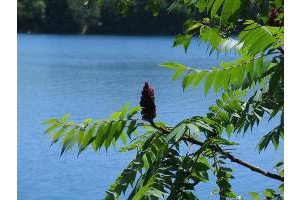Staghorn sumac is native to the U.S. and is in the Anacardiaceae (Sumac Family).
Photo Credit: © Abraham Miller-Rushing
Rhus typhina
Common Name: staghorn sumac
Other Scientific Names: Rhus hirta
Plant Functional Group: Deciduous broadleaf
Class > Order > Family: Magnoliopsida > Sapindales > Anacardiaceae
